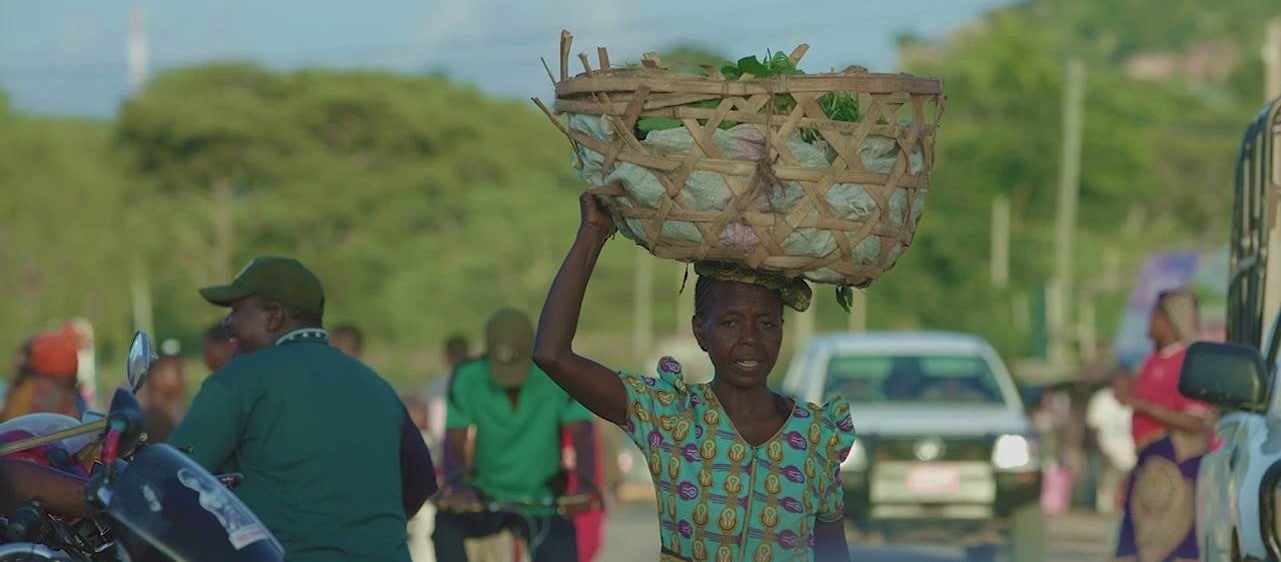 Roads to Inclusion and Socioeconomic Program | Image: World Bank
Roads to Inclusion and Socioeconomic Program | Image: World Bank
For Yusta and Prisca, a woman and a girl living in rural Iringa, Tanzania, gender inequality permeates many aspects of life, including how they move around. Females represent more than half of road users in Africa—most of them are pedestrians, while some use public transport and bicycles. Women often walk long distances, carrying heavy loads on their heads and babies on their backs. In the absence of proper sidewalks and other basic infrastructure, many of them have no choice but to walk in ditches, on dusty curbs, or muddy and insecure paths. These conditions severely impact their ability to access opportunities, health, education, and other essential services with dignity. The issue is well-known, yet change has been painfully slow. Why are we leaving so many women by the roadside? Why aren’t we giving women like Yusta and girls like Prisca a safe path to the life they aspire to?
In Africa, road engineering has traditionally prioritized vehicular speed and safety without considering community behaviors. This approach has given little consideration to pedestrians and other vulnerable road users, many of whom tend to be low-income women. Road design has been mostly “gender-blind,” meaning that it largely ignores the specific mobility patterns of women and men derived from traditional gender roles. Working together under the Roads to Inclusion and Socio-economic Opportunities Project (RISE), the World Bank, the Tanzania Rural and Urban Roads Agency (TARURA) and the Tanzania National Roads Agency (TANROADS) are looking to challenge the status quo by introducing a People-Centered Design (PCD) approach that includes three community-sensitive and gender-sensitive elements to truly facilitate women’s mobility needs.
First, we need to meaningfully listen to everyone’s voices. The innovative PCD approach for rural roads in Tanzania allows all voices in the community to be heard, addressing the barriers that women and girls face to access and participate in discussions. The consultation process is thoughtfully designed to accommodate women’s needs, with meetings organized at the most convenient times for them and in safe spaces. Transport to the meetings is provided whenever necessary. Plenary meetings are followed with focus group discussions, where women gather in smaller groups to discuss contents specific to their needs with trained female facilitators who create a safe environment, encouraging them to speak up.

Second, the input and needs of women and girls must be incorporated into road design. People-centered consultations help road agencies and engineers better understand the mobility needs and concerns of local communities, paying special attention to women’s perspectives. Based on the consultation results, preliminary road designs are adjusted to accommodate the needs of the community. This leads to safer, more reliable rural mobility infrastructure that is community-sensitive and gender-informed. Consultations conducted for the RISE project in the central town of Iringa, where 60% of the pedestrians are female and 93% of pedestrians report feeling unsafe, resulted in the incorporation of complementary road design features that had previously been overlooked. Women’s concerns about the risk of assault, for instance, led the project team to add better street lighting and clearer pedestrian paths/sidewalks to the road upgrading plan. Likewise, lower speed limits were introduced around markets, village centers and schools, which particularly benefits women and girls.

Third, beyond road design, consultations on road projects can provide an opportunity to identify and address broader issues affecting women and girls. Deeper engagement with women helps identify other relevant issues that are often silenced or ignored, such as gender-based violence and employment barriers. The PCD consultations create a safe space and an enabling environment for women to open up, allowing project teams to assess the prevalence of gender-based violence within a community and to ensure that those who disclose experiences of assault are referred to appropriate support services. In Iringa, the consultations revealed that the fear of assault led some women to have trusted mototaxi drivers pick them up from their homes. The process also shed light on the limited number of public transport and mototaxi female drivers operating in the area, which contributed to female commuters feeling unsafe, and, ultimately, could keep them away from school, healthcare, or employment opportunities. These issues rarely come to the surface through traditional approaches, in large part because existing community mechanisms for conflict resolution perpetuate gender norms that condone violence, causing women to fear they would be stigmatized if they were to speak up.
The ideas promoted by the PCD approach--providing women and girls, along with all other road users, with true voice and agency in road design—constitute the first step to building safe and inclusive roads for all. Our experience in Tanzania shows the transport sector has a lot to gain from stepping up inclusion efforts and incorporating gender considerations into every step of rural road projects—from initial consultations to design to implementation. Accompanied with other interventions such as activities promoting women’s economic empowerment and employment, this can potentially contribute to challenging inequities and changing norms. It is time to put women at the center of road design.
Acknowledgements
The PCD approach was conceptualized by Tanzania Rural and Urban Roads Agency (TARURA), Tanzania National Roads Agency (TANROADS) and the World Bank and benefited from the support of the specialized international road safety NGO AMEND for the design and rollout of the consultations. Activities were partially funded through the Corridors for Growth Multi-donor Trust Fund, administered by the World Bank, with funding from the Foreign, Commonwealth and Development Office (FCDO). The authors would like to express their gratitude Sergio Garcia-Monroy and Maria Jose (May) Sala for their contributions to this blog; and to Feng Ji, Loy Nabeta, Mauro Azeredo, Xavier Muller and Julia Schipper for their feedback.
Want to learn more? Take a look at our second blog post: Improving urban transport in Tanzania’s secondary cities: Design for people, not for cars for specific recommendations on how to break this cycle of car-centric development and put Tanzania on the path to a more sustainable urban transport future



Join the Conversation